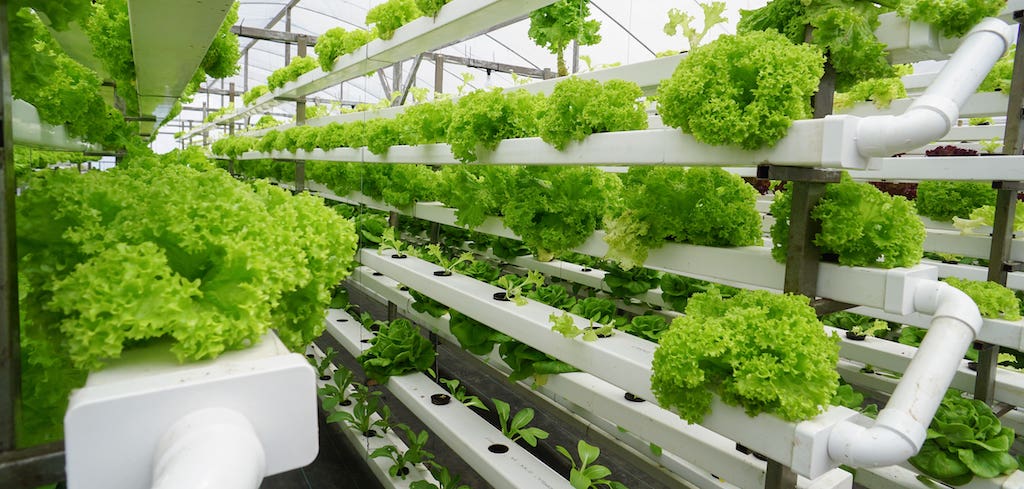Amid rising energy costs and inflation leading to downsizing and bankruptcy of vertical farms in Western Europe, those in emerging Europe are witnessing growth.
The continent’s consideration of carbon footprint and food sustainability has led to a heightened interest in vertical farms.
Vertical farming employs stacked layers of crop-growing spaces, lit by LED lights, within warehouses or similar structures, allowing for more land-efficient agriculture nearer to urban centers. This cuts down carbon emissions and the expense of global produce shipment. Indoor spaces free from pests allow for up to 15 harvests per year, as compared to conventional field farming that yields only twice a year.
As the Earth’s population sees a monthly increase of 5.5 million individuals while losing 23 hectares of agricultural land every minute, there’s a pressing need to reconsider our farming methods. Climate change impacts crop growth locations and can render many areas unfit for farming, while urban migration is on the rise in numerous countries.
With these trends in mind, vertical farming appears to be an appealing resolution to food security and sustainability issues. This has led to unprecedented investments in vertical farming companies across North America, East Asia, and Europe. The Gulf States and other Middle Eastern countries are also becoming prime vertical farming locations due to their proximity to food insecurity and inexpensive energy.
However, the high energy intensity of vertical farming was a hurdle for Europe in 2022, as energy costs for LED lights and climate controls escalated.
Agricool from France, a firm that raised 30 million euros, went bankrupt. Infarm, once Europe’s most significant vertical farming company based in Berlin, laid off half of its workforce, amounting to 500 employees, in late 2022 due to power expenses, supply chain disruptions, and the economic environment. By June, Infarm planned to exit Europe entirely, most likely for the Middle East, after ending partnerships with European grocery chains.
According to Andriy Yarmak from the United Nations’ Food and Agriculture Organisation (FAO), the most advantageous crops for vertical farming are expensive plants with short production cycles and negligible competition. Successful vertical farms are often associated with high-income cities boasting well-established hotel, catering, and restaurant (HoReCa) sectors. However, as inflation has grown across Europe, reducing purchasing power, consumers have cut back on expenses at high-end restaurants and hotels that collaborate with vertical farms.
Despite these challenges, emerging Europe’s vertical farms have shown resilience. The vertical farms of Lithuania, Ukraine, Moldova, and Georgia have successfully weathered the difficulties of the past year.
Georgia’s SpaceFarms, located within the Stamba Hotel, supplies greens to all the Adjara Group’s restaurants year-round. Meanwhile, in Ukraine, vertical farmers have adapted remarkably well to the ravages of war. For instance, after his vertical farm in Dnipro was demolished by Russian shelling, Viktor Shuleshko rebuilt it in a bomb shelter.
As Ukraine aspires to become a “start-up nation” like Israel, Israeli start-up Vertical Field has set up pilot vertical farms in the stores of Ukrainian supermarket chain Varus. Papa’s Greens in Moldova supplies products to 60% of HoReCa establishments in Chişinău and sells pre-packaged mixed salads, micro-greens, and edible flowers in Moldovan supermarkets.
In Lithuania, Leafood’s farm occupies a vast warehouse on the outskirts of Vilnius. When it reaches full capacity by autumn, it aims to harvest a tonne of leaves from 12 varieties of greens and herbs daily, meeting a tenth of the total demand in Lithuania.
The founder of Leafood, Valentinas Civinskas, plans to expand into neighboring Baltic countries and Poland soon. While the future of vertical farming in much of Europe remains uncertain, with the right location, geopolitical dynamics, and expertise, resilient companies can thrive while providing locals with the freshest, locally-grown greens.



What do you think?
Show comments / Leave a comment